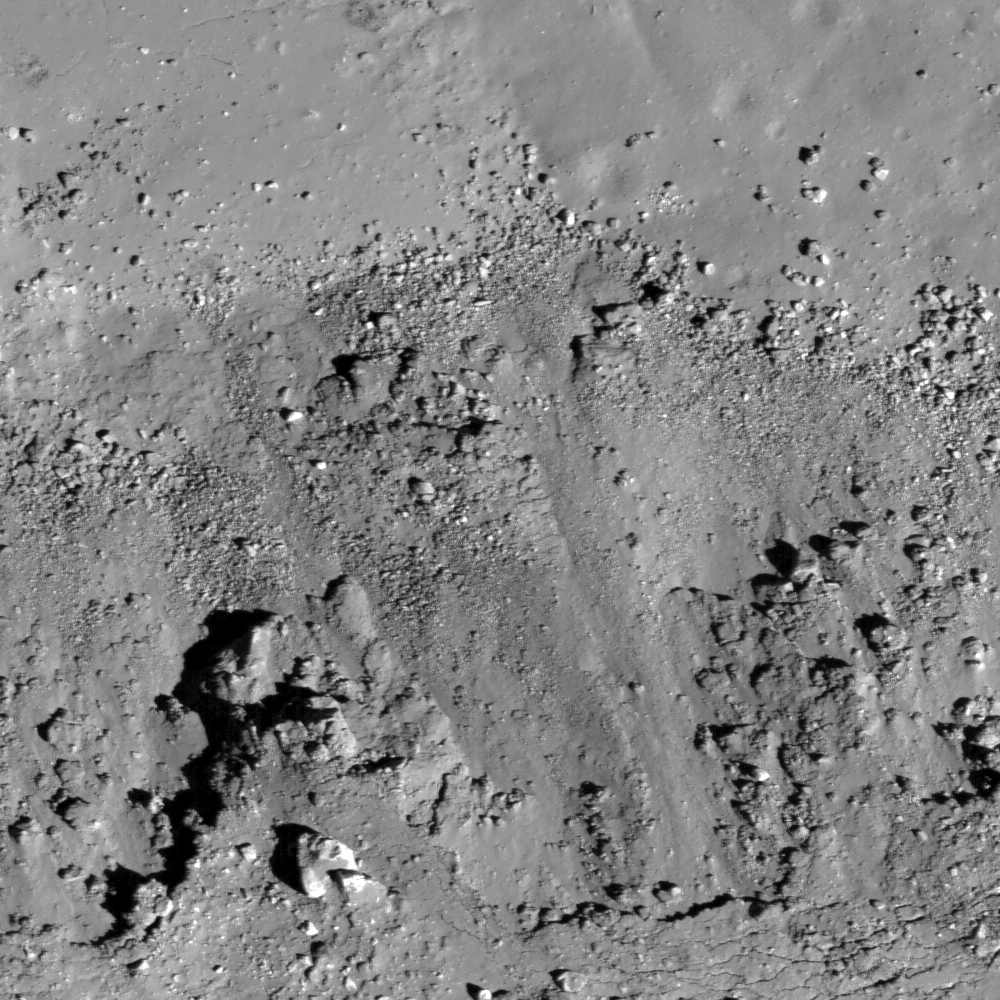
A key part of the LROC science investigation is the imaging and analysis of fresh, Copernican-aged craters, like this small (6-km diameter) example at the edge of Oceanus Procellarum, west of Balboa crater. The LROC team has seen a variety of landforms related to these important lunar features. For example, a landslide on the crater wall partially covers the solidified impact melts on the floor. The landslide clearly happened after the crater initially formed; the materials were likely dislodged by seismic shaking from nearby smaller impacts.
These young, fresh craters preserve an vital record of the impact process. Where does ejecta come from? How much impact melt is produced? How thick is ejecta? What is the importance of self-secondary impacts? These are only some of the important scientific questions that lunar scientists can address by studying these craters. As geologic time progresses, the pristine features in fresh craters are worn down by impacts of all sizes. Understanding young craters help geologists piece together the history of ancient degraded craters, an understanding particularly useful for planning future human missions to the Moon. The best way to explore fresh craters like this one, of course, would be with astronauts. However, until humans return to the Moon, lunar geologists will analyze images like this for clues, as well as comparing the landforms like the one visible here with other craters on the Moon, Mars, and impact structures on Earth.
Explore this crater yourself in the whole NAC image!
Published by Samuel Lawrence on 21 December 2009